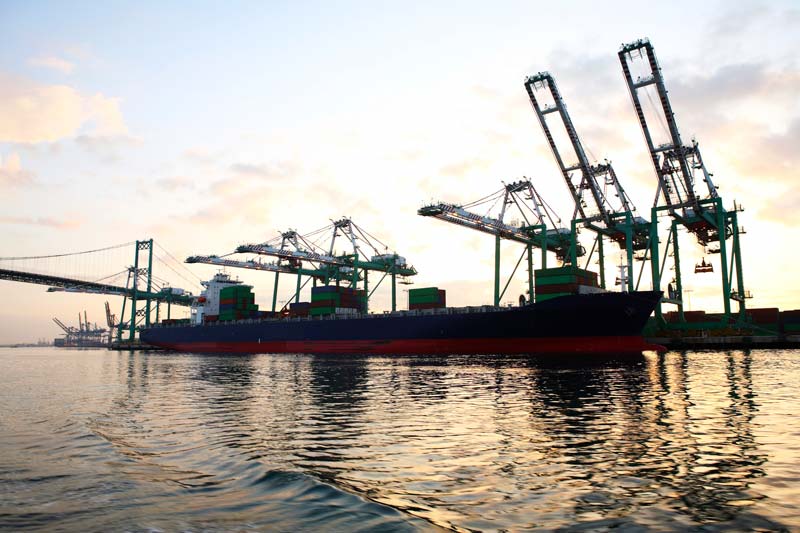FDIC-Insured - Backed by the full faith and credit of the U.S. Government
-
-

-
Matthew Burke
Director, Commercial Banking
Date Published: April 15, 2018
-

Small Businesses Align with Global Solutions
Risk & Reward
Every transaction in the business world contains some type of risk; but that risk is usually offset by the promise of reward, or profit. It is up to ownership and management to balance this dynamic, in order to find profitable markets at an acceptable risk tolerance. But all too often, the risk tolerance for a small business seems to reach its peak when the possibility of exporting the product arises.
From a sales and marketing perspective, there has never been a better time for companies to look internationally for new, profitable customer relationships. As the Internet has made the world “smaller”, local businesses find that it is much easier to find new customers while demonstrating their product to a global audience. Foreign companies find that the excellent reputation of US companies, (delivering quality products and friendly customer service) puts many international buyers at ease.
The Balancing Act
So how does a small business balance the risk and rewards that come from selling globally? Where can a small business learn about the intricacies of international trade? The short answer for most is building quality relationships with those that specialize in global services. Other equally important partners include the local office of the US Commercial Service (a division of the U.S. Department of Commerce), a quality freight forwarder and a foreign receivable insurance broker. After the proper team is assembled, a small business will be able to mitigate foreign buyer payment risk, transactional risk and even some political risks.
The Banking Component
The financial institution is a key player in a small business’s international sales program. In many cases the payment of funds is conducted through banking channels (wire or check), and keeping your bank abreast of your international sales orders is a good way to receive those funds in an expedient manner. A savvy business will lean on their banker to provide a “crash-course” in international banking, international payment methods and risk mitigation. If this is not a specialty of your financial institution, find a banker who is willing to listen to your needs and then provide a custom fit solution for your international sales program.
Payment Terms
Let’s be honest, the sales process for a small business is not complete until the cash is in your hands, so making the choice of which payment terms to utilize is crucial. Below is a quick description of some of the most common payment terms and how they work.
- Open Account – This is the best scenario for the buyer. The buyer receives the final goods and makes the payment at a later date. This can create cash flow issues for the seller, as payment is usually made 30, 60, or 90 days after delivery.
- Cash in Advance – This is the most advantageous payment term for the seller. Cash is received up front, before the goods are ever shipped to the foreign buyer. In a competitive selling environment, cash in advance is rarely used.
- Letter of Credit – Payment is assured as long as all conditions of the letter of credit are met. A letter of credit substitutes the credit worthiness of your buyer for their international bank. All documents flow through banking channels.
Foreign Currency
The foreign exchange (FX) market is one of the world’s largest asset classes by trading volume, worth $744 trillion a year, according to NASDAQ. Most small businesses are unable to devote adequate resources to keep up with this ever changing FX market. The volatility of the FX market is primarily based on four factors including economic news, market sentiment, politics and central bank intervention. Utilizing an international bank’s expertise in the foreign exchange marketplace has some huge advantages when selling and invoicing in a foreign currency:
- Global customers can compare pricing (apples to apples)
- Allows a small business to compete against multi-national firms with local presence
- Allows competition against in-country competitors
- Risks can be mitigated by utilizing forward and option hedging strategies
- Banks can provide analyst forecasts and technical analytics for most currencies
Bank Financing
Understanding the available loan structures available from your financial institution can help with the cash flow needs created by exporting. This cash flow crunch is lessened by utilizing a revolving line of credit that can be backed by the Export Import Bank of the United States (EXIM) or the Small Business Administration (SBA). With a guarantee from EXIM or the SBA, your bank can utilize assets to lend against, including foreign accounts receivable and inventory that are not normally available under a “typical” revolving credit line.
Finding a Banking Partner
One of the keys to exploring exporting opportunities is to find the right partner. An excellent international banking partner will know your product, understand your risk tolerance and be invested in your success. Your bank will also be able to provide a custom educational program for frontline employees and find the custom fit solution to maximize profits while attempting to minimize risk.
The articles in this blog are for informational purposes only and not intended to provide specific advice or recommendations. When making decisions about your financial situation, consult a financial professional for advice. Articles are not regularly updated, and information may become outdated.
